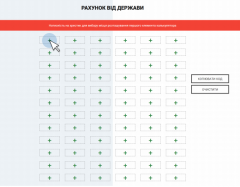Your “receipt from the state”-2014
In 2014, Ukraine faced significant budgetary challenges. Revolution followed by the occupation of the part of the Ukraine’s territory, on the one hand, rose public spending due to Hryvnia depreciation and military expenditure and, on the other hand, negatively affected public revenue due to the economic crisis. As a result, the national debt reached a critical level. What does all of this mean for an ordinary citizen? This report provides the answer to this question.
To start with, in 2014, the “price of the state” for an ordinary taxpayer grew to UAH 35 thousand a year (in 2013, it was UAH 31 thousand a year per). This includes: social contribution (UAH 16,854 a year), value added tax (UAH 8,251 a year) and individual income tax (UAH 6,665 a year), which together account for more than 90% of tax expenditure of a Ukrainian.
The structure of spending also changed. There was increase in military expenditure (to UAH 947 a year per taxpayer) and law enforcement expenditure (to UAH 1,552 a year). Expenditure on debt servicing also rose dramatically due to Hryvnia depreciation (to UAH 1,710 a year). Pensions remained the largest expenditure category – everyman spent UAH 19,615 in 2014 to support the elderly.
As the national debt skyrocketed, debt per person also increased dramatically. As of the end of 2014, debt per person in Ukraine reached UAH 60.9 thousand (the yearly increase was UAH 32.2 thousand). The key reasons behind the growth of the Ukraine’s debt were Hryvnia depreciation, energy subsidies, and bank bailouts.
For more details, please read our traditional report “Your “receipt from the state”-2014” (Ukr.).
